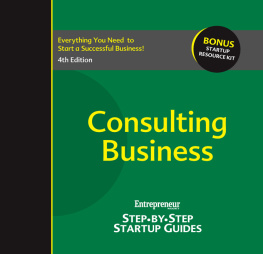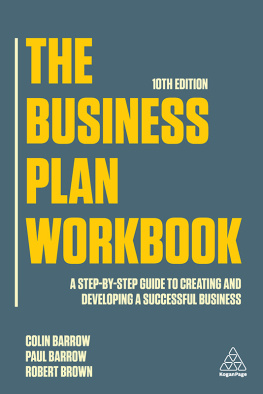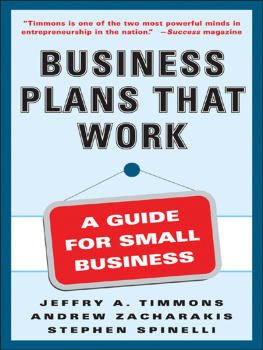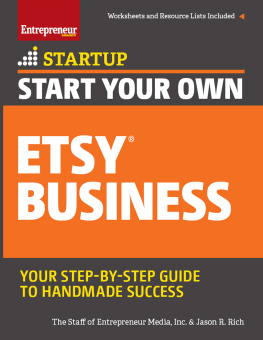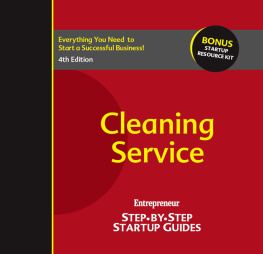

Copyright 2003 by McGraw-Hill. All rights reserved. Except as permitted under the United States Copyright Act of 1976, no part of this publication may be reproduced or distributed in any form or by any means, or stored in a database or retrieval system, without the prior written permission of the publisher.
ISBN: 978-0-07-150487-4
MHID: 0-07-150487-7
The material in this eBook also appears in the print version of this title: ISBN: 978-0-07-141012-0, MHID: 0-07-141012-0.
All trademarks are trademarks of their respective owners. Rather than put a trademark symbol after every occurrence of a trademarked name, we use names in an editorial fashion only, and to the benefit of the trademark owner, with no intention of infringement of the trademark. Where such designations appear in this book, they have been printed with initial caps.
McGraw-Hill eBooks are available at special quantity discounts to use as premiums and sales promotions, or for use in corporate training programs. To contact a representative please e-mail us at bulksales@mcgraw-hill.com.
TERMS OF USE
This is a copyrighted work and The McGraw-Hill Companies, Inc. (McGraw-Hill) and its licensors reserve all rights in and to the work. Use of this work is subject to these terms. Except as permitted under the Copyright Act of 1976 and the right to store and retrieve one copy of the work, you may not decompile, disassemble, reverse engineer, reproduce, modify, create derivative works based upon, transmit, distribute, disseminate, sell, publish or sublicense the work or any part of it without McGraw-Hills prior consent. You may use the work for your own noncommercial and personal use; any other use of the work is strictly prohibited. Your right to use the work may be terminated if you fail to comply with these terms.
THE WORK IS PROVIDED AS IS. McGRAW-HILL AND ITS LICENSORS MAKE NO GUARANTEES OR WARRANTIES AS TO THE ACCURACY, ADEQUACY OR COMPLETENESS OF OR RESULTS TO BE OBTAINED FROM USING THE WORK, INCLUDING ANY INFORMATION THAT CAN BE ACCESSED THROUGH THE WORK VIA HYPERLINK OR OTHERWISE, AND EXPRESSLY DISCLAIM ANY WARRANTY, EXPRESS OR IMPLIED, INCLUDING BUT NOT LIMITED TO IMPLIED WARRANTIES OF MERCHANTABILITY OR FITNESS FOR A PARTICULAR PURPOSE. McGraw-Hill and its licensors do not warrant or guarantee that the functions contained in the work will meet your requirements or that its operation will be uninterrupted or error free. Neither McGraw-Hill nor its licensors shall be liable to you or anyone else for any inaccuracy, error or omission, regardless of cause, in the work or for any damages resulting therefrom. McGraw-Hill has no responsibility for the content of any information accessed through the work. Under no circumstances shall McGraw-Hill and/or its licensors be liable for any indirect, incidental, special, punitive, consequential or similar damages that result from the use of or inability to use the work, even if any of them has been advised of the possibility of such damages. This limitation of liability shall apply to any claim or cause whatsoever whether such claim or cause arises in contract, tort or otherwise.
This book is dedicated to
Americathe land of opportunity.
The entrepreneurswhom I have met, worked with, and learned from over the years. They and other entrepreneurs throughout the country had the courage to venture out and create the standard of living we enjoy today.
My students, who demonstrate that the entrepreneurial spirit is alive.
My father, H. Mitchell Harper, Jr., who helped me realize you cant take it with you and that life is not a spectator sport.
The people who came up with the Schlitz slogan, If you can only go around once in life, then do it with gusto! the Michelob slogan, Who says you cant have it all? and the Nike slogan, Just do it! These slogans capture the essence of the entrepreneurial spirit.
Contents
Lessons for Starting Your Own Business
Fred DeLuca
Dr. Harper hits on so many of the lessons that I wish someone had taught me when I started out on this incredible journey of owning my own business. For me, it was the summer of 1965, and as a 17-year-old college student I knew little about running my own business. There were nowhere near as many resources for would-be entrepreneurs as there are today. My partner, Pete Buck, and I learned things as we went along, and we learned many things the hard way. However, after many challenges, a few pitfalls, and a lot of education, we realized our dream of being successful entrepreneurs. We have and continue to learn many lessons about business every day we operate. Thank you, Dr. Harper for helping all of us entrepreneurs in our quest for success.
1. Opportunity waits for no one.
Think about all the opportunities that are afforded you as you begin your planning for opening your own business. Look at the options from all angles, educate yourself but do it quicklyopportunity waits for no one. Take that first step.
Fred DeLuca is cofounder and president of Subway Restaurants. Subway Restaurants is the worlds largest submarine sandwich franchise, with more than 17,500 locations in 71 countries. It is also the second largest fast-food franchise chain in the world and has recently surpassed McDonalds in the number of locations in the United States and Canada. Headquartered in Milford, Connecticut, Subway was cofounded by Fred DeLuca and Dr. Peter Buck in 1965. That partnership marked the beginning of a remarkable journey, which has made it possible for thousands of individuals to build and succeed in their own businesses.
In 1965, my opportunity came when I told a family friend, Pete Buck, that I was trying to find ways to finance my college education. Petes ideaopen a submarine sandwich shop. He would be my partner, loan me $1000 to get started, and that would be that. It was an opportunity I could not pass up.
2. Do your homework.
Learn and then learn some more. Resources are plentiful for business owners. I strongly suggest you do your research and look at all aspects of the business you want to own. Talk to others who share your dream or who are operating a similar business. Going into business can be as exciting as it is challenging.
In the case of Subway, Pete Buck and I traveled to other submarine or Italian sandwich shops in New England to see how they operated before we embarked on our journey.
3. Be persistent and dont give up.
In business there will always be obstacles in your path. One of the keys to success is how you handle them. Some people just quit while others keep working to find solutions.
At Subway, we have had our share of obstacles. For instance, our sales during the first day in business were fantastic but they declined steadily with each passing week. Within 6 months, sales were so poor that we considered just locking the door and throwing away the key to cut our losses. Instead we decided to stick with it, and we even took the unconventional approach of opening a second store before the first one turned a profit.
4. Have a planbut be flexible.
Just because you have an idea and a strategy, dont hesitate to stray from the original plan if it means the difference between success and failure. The year after we started we were faced with the fact that we were losing money and might have to close up shop. We did not want to fail. So, we thought of other solutions, and we came up with something we really liked: We decided to go forward and open a second store! We thought although there were some definite risks, there were benefits too. We would have more brand visibility: We could advertise more and get our message to more customers!
Next page

